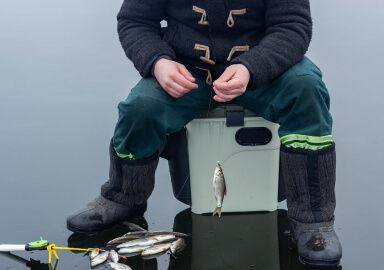Green Jobfish
What's green or blue, looks like a snapper, patrols the bottom and is famous for making the angler sweat before they can land it? Green jobfish!
View 7 listings
7
listings
–
price starting from
5
countries
Where and When?
Green jobfish are distributed around the warm water areas of the Indian and Pacific Oceans from the Red Sea south to South Africa then eastwards to Australia and north again to southern Japan. They are one of the most common and sought-after snappers on reefs around Hawaii.
Green jobfish are described as benthopelagic; that is, they favour swimming above, but fairly near, the bottom, especially around reefs and structure. The species is found from almost at the surface to about 120 m. (390 ft.). They are rarely caught from shores in sandy areas but, where deepish rocky areas are located near the shore, jobfish can be caught from headlands and structure. Green jobfish are principally optic feeders and so daytime is best and especially early and late in the day.
Although almost fully associated with reef or hard structure they often spend their time patrolling quite well above the substrate where they are among the top predators along with species such as bluefin trevallys and potato bass. In full tropical areas, like Hawaii, the green jobfish is caught throughout the year, while in less warm areas they either move towards the equator or become less active and are rarely caught at cooler times.
About Green Jobfish
Green jobfish (Aprion virescens) (also called “jobbies” in Australia) are the only member of their genus that belongs to the “snapper” family (Lutjanidae). The species is important both commercially and in game fishing circles. They have slim but robust, cylindrical torpedo-shaped bodies, large eyes, and a deeply cleft tail fin. Their mouths are at the front of their heads and armed with two rows of small sharp teeth with two large canine teeth near the front.
Green jobfish body colour is usually dark-green to bluish all over. The maximum length is 112 cm (42 in.) with a maximum mass of 15.4 kg. (34 lbs.) but they are more common around 90 cm. (35 in.). Fish is the most common food of the green jobfish, but they also take crustaceans and cephalopods (squid and cuttlefish) on occasion. The species is usually found singly or in small groups of similar-sized individuals. Off Hawaii they spawn several times per year, usually between March and October.
How to Catch?
Green jobfish are a top priority gamefish in much of their range, and have a well-earned reputation for being hard fighters with an exceptionally strong first run. It is usually difficult to reach green jobfish from the shore and, while fly fishing can be great sport, it is usually challenging to cast far enough from land to reach the waters they patrol. Consequently, fishing from small shore-based boats is the most common approach to targeting this species.
Fly fishing can be explosive and adrenaline-pumping fun, but green jobfish in deeper waters usually feed fairly far down in the water column except where reef tops approach the surface. While bottom rigs with natural baits can work, most sport anglers use medium strength spinning equipment and either soft plastics or hard spoons, plugs or jigs.
Although a bottom-loving species, the green jobfish is well-known for taking trolled lures as they pass over shallow points on reefs. In parts of Australia and Hawaii game anglers will specifically target green jobfish but in most cases they are caught by anglers looking for various trevalleys, king mackerel and other species like barracuda. Targeting green jobfish is often not easy but the capture of a good-sized individual is quite an achievement and a lot of fun!








